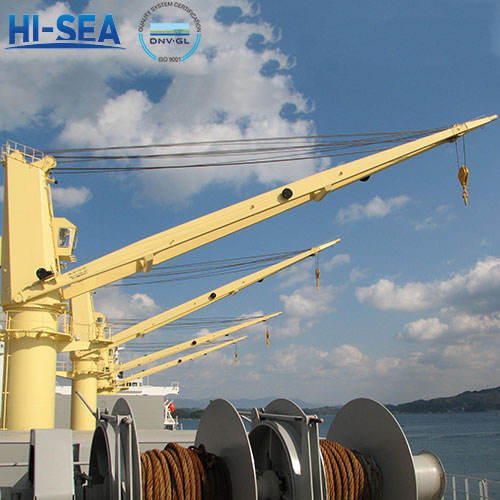
What is a marine crane?
A marine crane, also known as a shipboard crane or offshore crane, is a specialized type of crane designed for use on ships, offshore platforms, or other marine vessels. These cranes are typically used for lifting heavy loads on and off ships or offshore structures, such as cargo, containers, equipment, or supplies. Marine cranes are engineered to withstand the harsh marine environment, including saltwater exposure, high winds, and dynamic vessel movements. They are often mounted on the deck of a ship or on offshore platforms and may be operated hydraulically, electrically, or with a combination of both.
Overview
Marine cranes are commonly known as crane cranes. The lifting equipment on ships used boom devices for a long time, but in the 1940s, some ships began to use cranes. It was not until World War II that they were gradually promoted and used. In the early 1960s, with the increasing size and speed of ships, there was an urgent need to shorten their port stay time and accelerate loading and unloading speed. As a result, cranes with compact structures, simple and reliable operation, and large lifting capacity emerged.
Advantage
1. High loading and unloading efficiency. Due to its good positioning ability, it reduces the handling of goods in the cargo hold, and there is no need to frequently adjust the position of the suspension rod like the suspension rod device, which can cause loading and unloading operations to pause midway. At the same time, the crane can handle the operation of both the front and rear compartments.
2. Easy to operate. There is almost no preparation work before use. The operator operates in a high-position cab with a wide field of vision and powerful operation.
3. The layout of the deck is relatively simple and occupies a small deck area.
4. Especially suitable for lifting heavy cargo. Any container ship with lifting equipment must be a crane.
Disadvantages
1. The self-weight, high centre of gravity, and large volume have a certain impact on the stability of ships and the visibility of ship navigation.
2. The price is relatively expensive and the initial investment is high.
3. High power and high requirements for ship power stations.
4. The degree of mechanization and automation of cranes is high, requiring high technical requirements for maintenance work.
These cranes come in various configurations and lifting capacities depending on the specific requirements of the vessel or offshore installation. They play a crucial role in maritime operations, facilitating loading and unloading activities, as well as supporting construction, maintenance, and repair tasks in offshore environments.
For more marine crane information, kindly please click here.





